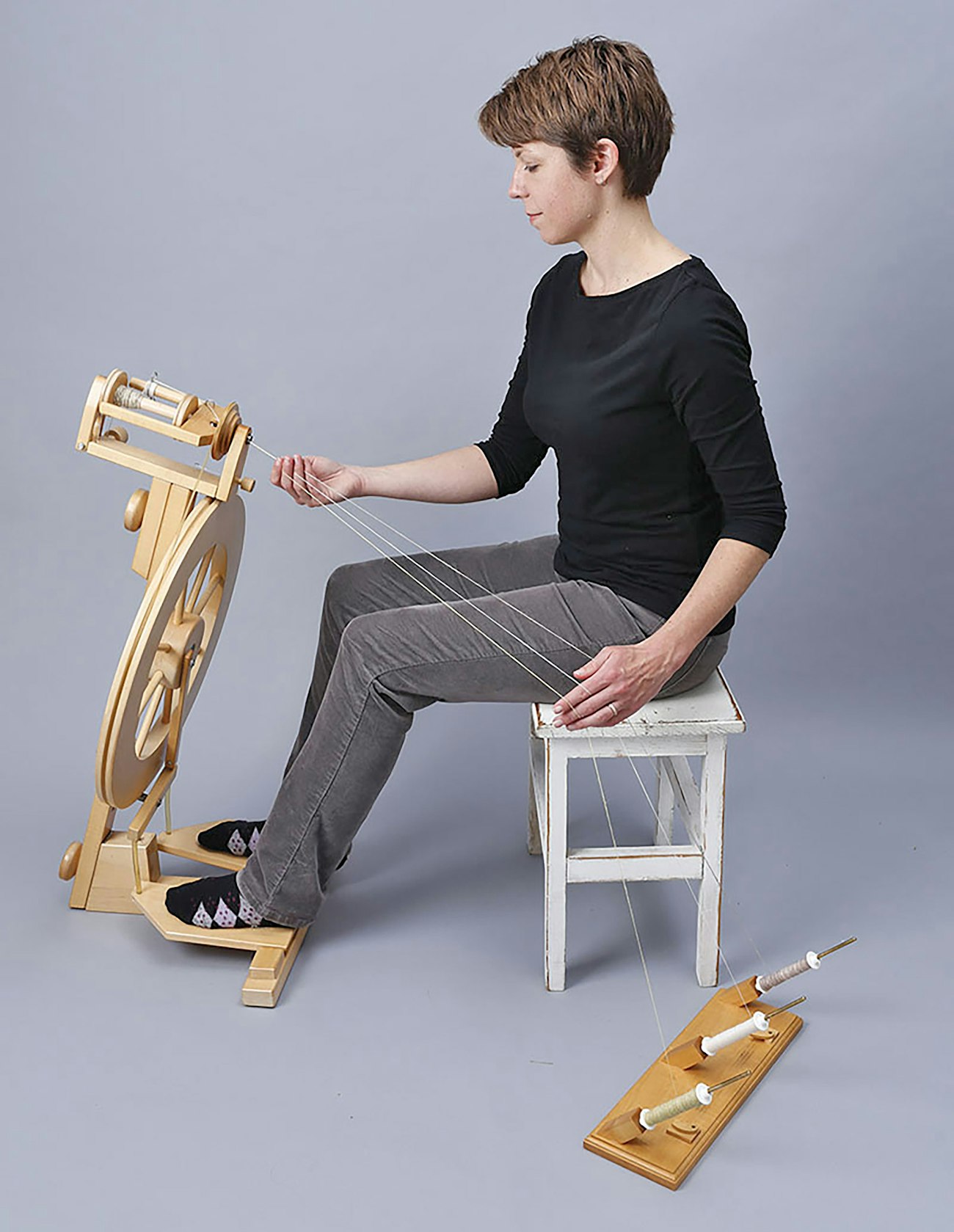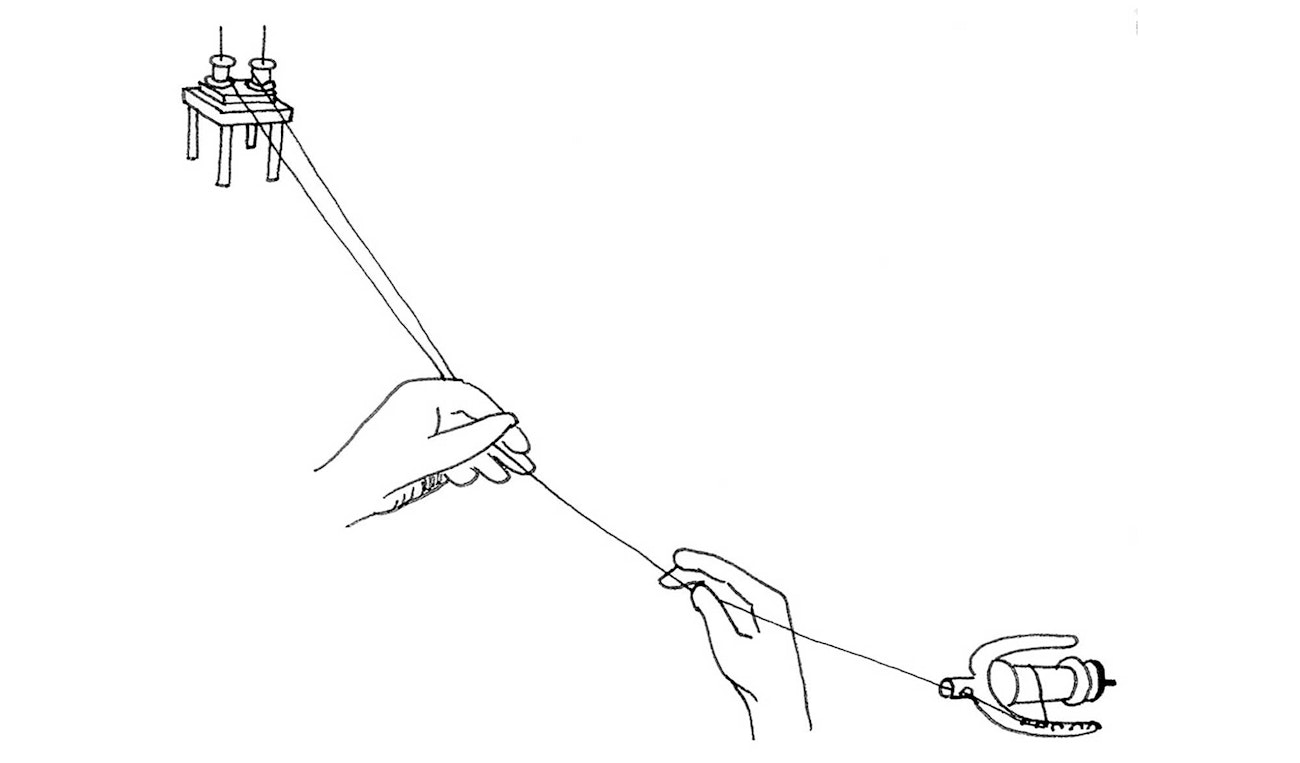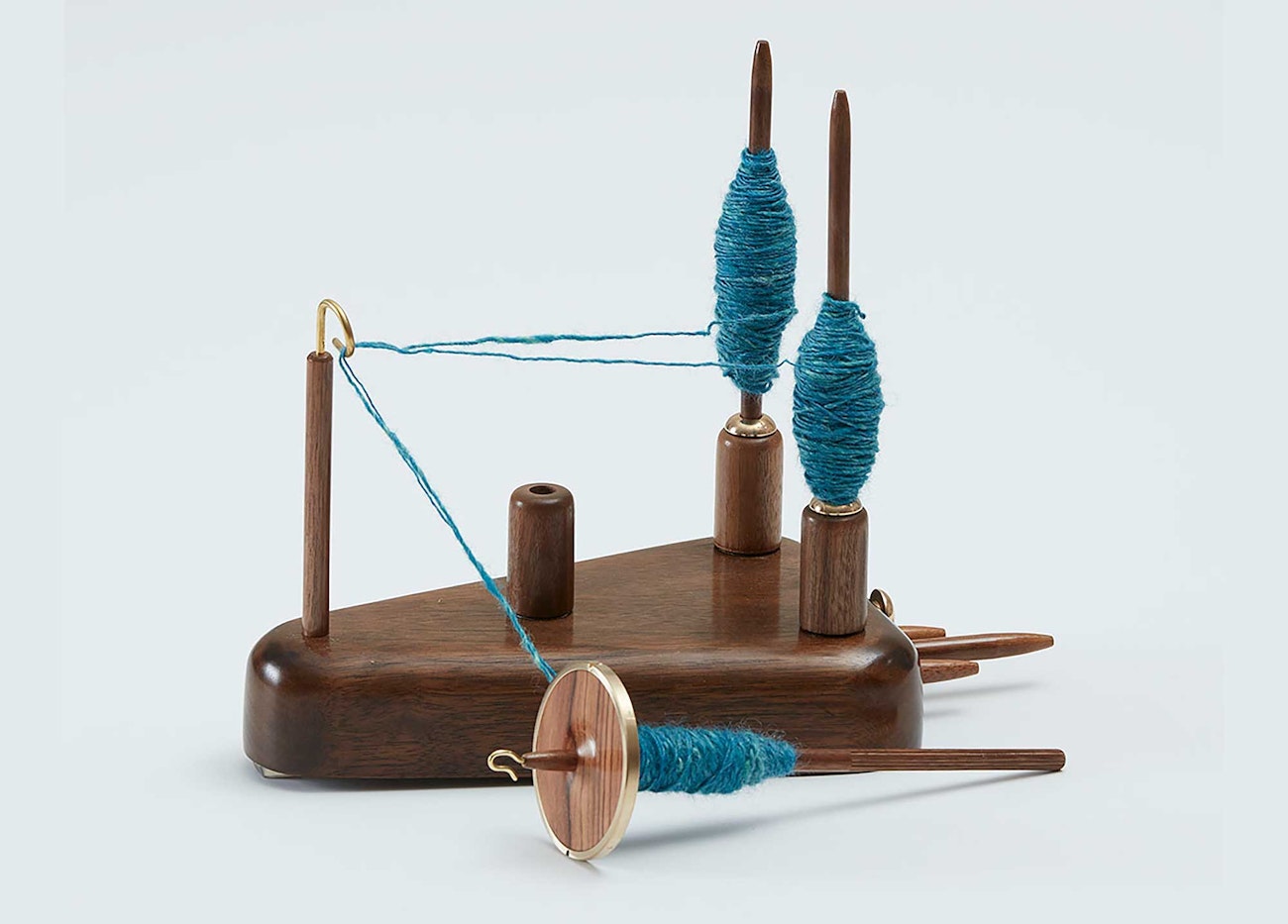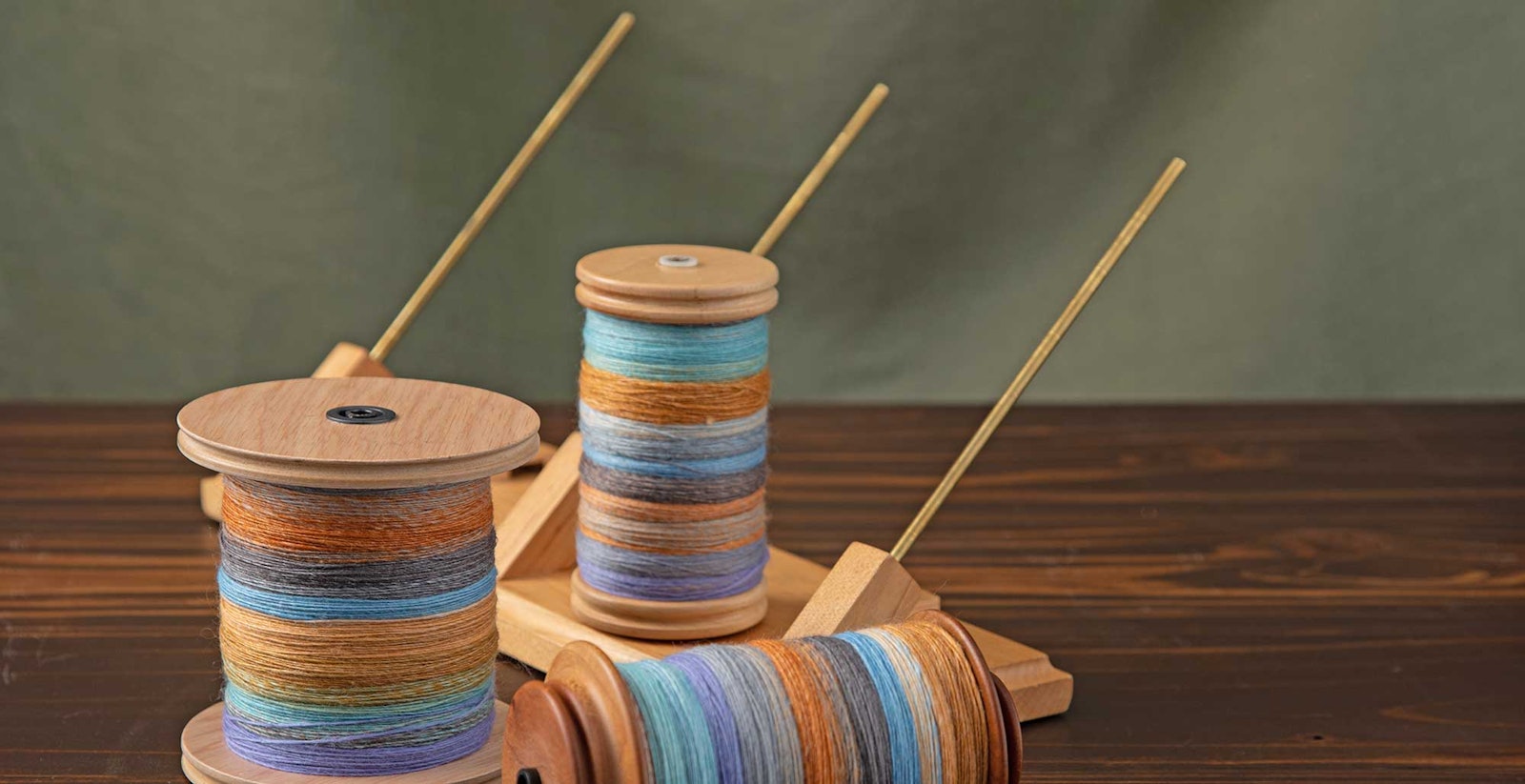Susan and Kate get a bad rap. The useful carousel/rotating kitchen tray was named “Lazy Susan” for the generic servant it was supposed to replace. So it is with the lazy kate, a device so helpful that every spinner should have at least one. Who was Kate, and where do we get off calling her lazy?
Lazy kates hold bobbins at the ready for plying, allowing them to unwind without adding or subtracting twist. They keep bobbins from tangling.
 Clever Kate Larson plies with the lazy kate an arm’s length away, beside and slightly behind her. Photo by Donald Scott
Clever Kate Larson plies with the lazy kate an arm’s length away, beside and slightly behind her. Photo by Donald Scott
Our research hasn’t turned up a definitive origin for the term “lazy kate,” but there are so many types of lazy kate available today that it can make your head spin.
Tensioned or Not?
Some lazy kates include a tensioning device such as a string that passes over the bobbin and spring that controls the tension. Others let the bobbins roll freely. Some spinners believe that tension interrupts the plying process and stresses the yarn; others feel that tension helps prevent “bobbin backlash” (when the momentum of the bobbin continues spilling yarn off the bobbin after the spinner has stopped pulling on the yarn). Plying speed may change the equation, too; try it and see. In any case, the tension should be just strong enough to keep the bobbins from getting carried away; you shouldn’t have to jerk the singles to release them from the bobbins. Just draping a string over a bobbin can provide enough tension.
How Many Bobbins Should One Kate Hold?
Most lazy kates hold three bobbins, though some hold two and some hold four. You may need an extra kate for four-ply or more complex yarns.
Where Does Kate Sit?
 In his Big Book of Handspinning, Alden Amos recommended placing the bobbins 8 feet from the orifice to ply. Illustration by Stephenie Gaustad
In his Big Book of Handspinning, Alden Amos recommended placing the bobbins 8 feet from the orifice to ply. Illustration by Stephenie Gaustad
My rule of thumb is to place the kate as far away as I can without giving the cat a lot of dental floss—that is, I don’t want too much yarn unwound to be tangled or chewed on, and if I break the yarn or need to change a bobbin I’d prefer not to have to leave the room to get to the kate. But positioning the kate a good arm’s length away gives space for the twist to redistribute itself over a length of singles, making the plied yarn more even.
Don’t Forget Spindles
 Golding’s Lazy Kate. Photo by George Boe
Golding’s Lazy Kate. Photo by George Boe
Spindle makers including Greensleeves and Golding make kates especially to hold spindles. There are even kates designed for support spindles.
Kate on the Go
When you take your spinning on the road, you may need to improvise a lazy kate. Many spinners have devised kates using cardboard boxes and knitting needles, but Sarah Anderson demonstrated a paper-bag kate that is clever indeed: it packs flat, costs almost nothing, and even includes a tensioning mechanism.
More Resources for Your Spinning Journey
- Bringing It All Together: Tools and Techniques for Plying Yarn On-Demand Web Seminar, by Stephenie Gaustad
- Gentle Art of Plying Video, with Judith MacKenzie
- The New Spinner's Guide to Plying! Video, with Anne Merrow
- Building Blocks of Spinning Video Download, with Sarah Anderson
- Spindle Spinning Essentials Online Course, with Devin Helmen
- The Spinning Teacher with Maggie Casey Online Course
- “Lazy Kates: Beginner Basics”
- “DIY Spinning Tools: Paper Bag Lazy Kate”
- “Simple Spindle Kate”
Anne Merrow is Editorial Director and a co-founder of Long Thread Media.
Originally published May 18, 2017; updated November 4, 2024.

